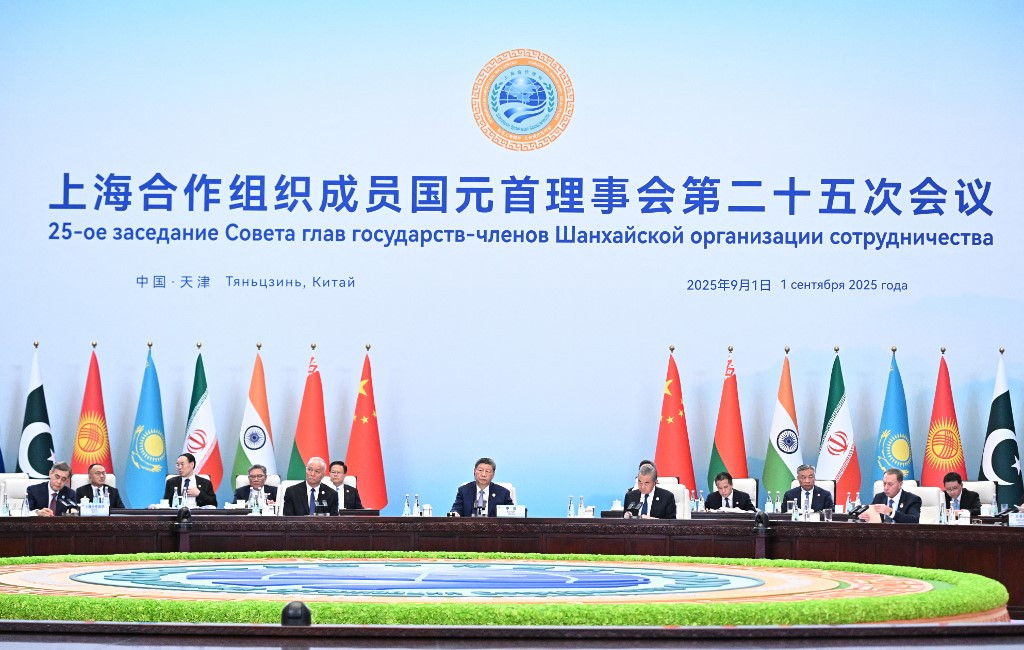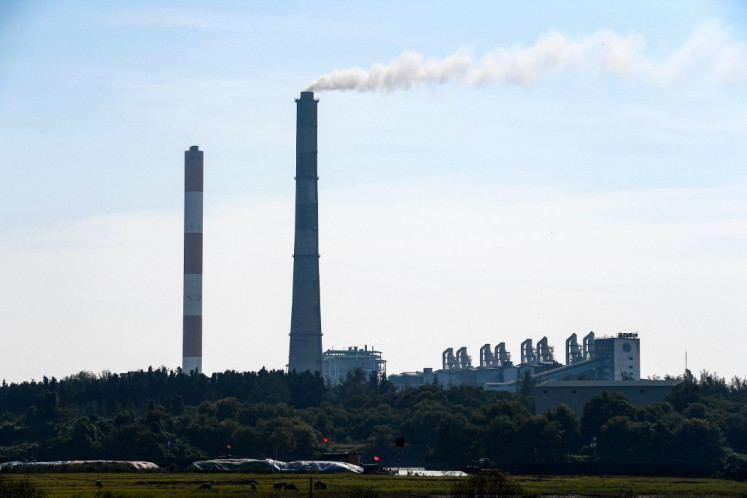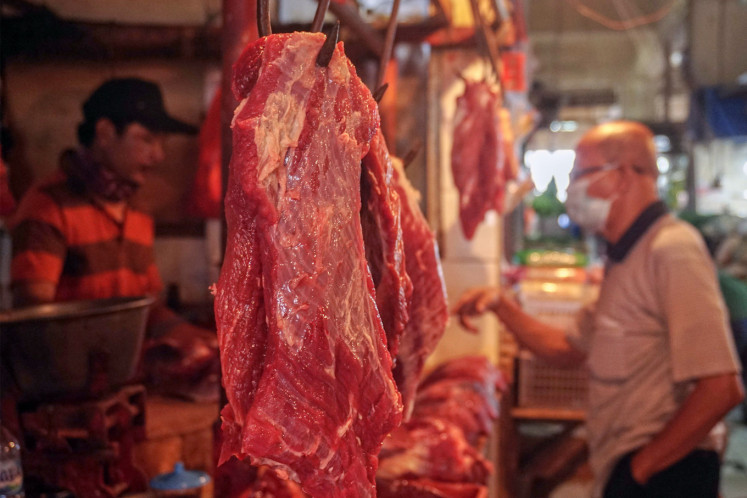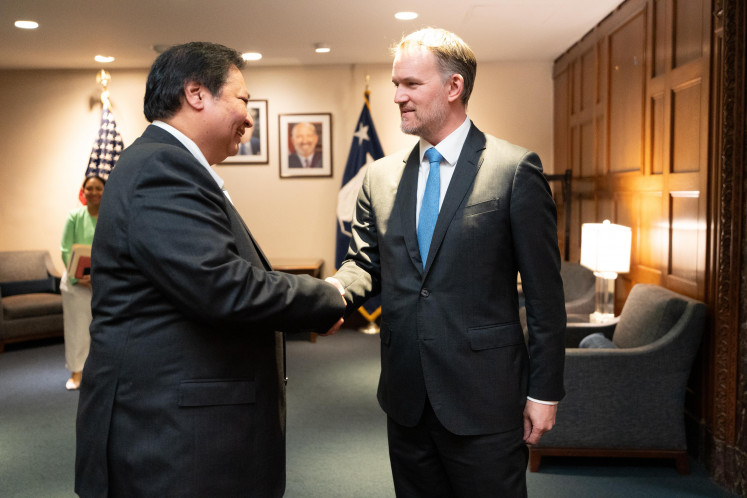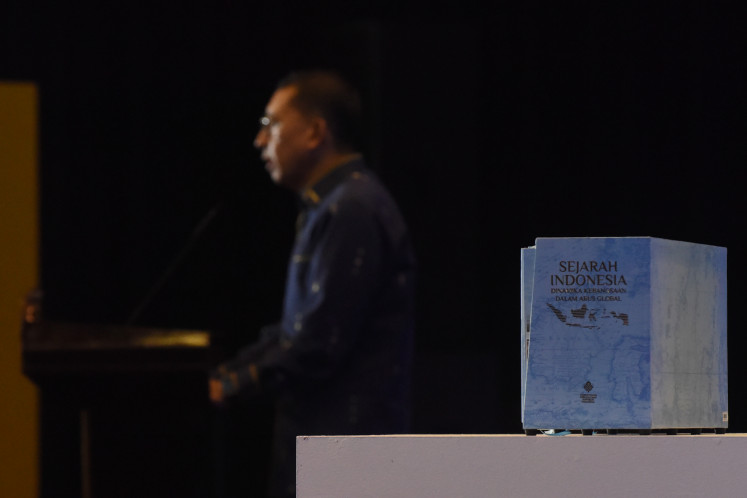Popular Reads
Top Results
Can't find what you're looking for?
View all search resultsPopular Reads
Top Results
Can't find what you're looking for?
View all search resultsCan China rewrite the rules of global governance?
The SCO summit at Tianjin, China, followed by a military parade in Beijing, signal China's effort to contest the erratic policies of the Trump administration and change the global and regional orders.
Change text size
Gift Premium Articles
to Anyone
B
y gathering 24 leaders from different parts of Asia and Russia, the Shanghai Cooperation Organisation (SCO) has sent concerted signals for changes in global and regional power structures.
The meeting also announced plans for strengthening energy security and economic cooperation under a new development bank.
The 25th rendition of the SCO summit meeting in Tianjin, China, on Aug. 31 to Sept. 1 was followed by a military parade in Beijing on Sept. 4.
These two major events also signal a resolve to not only consolidate and contest the vagaries of the Donald Trump administration in the United States, which had imposed debilitating tariffs on almost all countries, but also to tweak the global and regional orders.
The Tianjin Declaration noted “profound historical changes” and said “geopolitical confrontations are intensifying, posing threats and challenges to the security and stability of the world and the SCO region. The global economy, particularly international trade and financial markets, is suffering severe shocks.”
This is in line with the host country China’s leader Xi Jinping’s repeated slogans of “great changes unseen in a century”.
The assumption here is that the US is a declining power and that China and its “partners”, such as those 11 countries who subscribed to China’s “community of shared destiny”, will be able to prevail in the global and regional orders. India has not endorsed the “community of shared destiny”.
China did make substantial progress as reflected in its “dual circulation economy” of imports and exports and domestic consumption, becoming a “superpower” in 11 areas such as digitalization, trade, hi-tech manufacturing, ship building, 5G telecom, drones, automation, robotics and others.
It is also gradually disassociating with the US or becoming autonomous in trade, semiconductors, energy and others while increasing costs for the US on magnets and rare earth metals.
The Beijing military parade also showcased nearly 50 new military technologies, power projecting forces and offensive “new domain and new quality military operational capabilities”.
Although China’s military equipment supplied to Pakistan performed miserably in the recent India-Pakistan conflict on May 7-10, nevertheless, this is bound to trigger a fresh arms race in the region.
However, Beijing needs allies and friends in the regional and global arenas. It needs to reinvent its magical weapon of “united front” as displayed at the Tianjin and Beijing confabulations. It also needs geographical space to hone its skills.
The Tianjin Declaration identified Central Asia as the “core area of the SCO” in order to build an “indivisible security architecture in Eurasia.”
China has been building extensive ties with the region through its summit meetings with Central Asian countries, energy pipelines, railways and integration with Eurasian Economic Union.
ASEAN was previously declared as the “core” and in the “drivers’ seat”. More than half of the ASEAN countries have now joined China’s bandwagon, without resolving the South China Sea islands disputes amicably.
While other major powers like Russia and India are regional and inward-looking, China has announced a medium-term development strategy for 2026 to 2035.
Banking on its Belt and Road Initiative (BRI), in which China has spent more than US$1 trillion, the Tianjin Declaration suggested building an “open, transparent, fair, inclusive and non-discriminatory multilateral trading system”, trade facilitation within the SCO framework, reforming international financial institutions to increase the representation and voice of developing countries and settling trade in local currencies.
These are significant moves to diversify and consolidate trade from western markets to Eurasia, undercut the influence of the US dollar and enhance China’s renminbi as a global currency from the current three percent.
However, intra-SCO trade is not high and trade barriers remain. Many countries also complain of lack of market economy status, or even discrimination, in China. These undermine China’s statements and ambitions.
One area in which the SCO wants to bridge the gap with the West is the energy sector. The declaration mentioned a road map for 2030 in “promoting the sustainable, stable and balanced development of a non-discriminatory global energy market.” The SCO combines major energy producers like Russia, Kazakhstan, Iran and others, and importers like China and India.
Russia intends to rely on China’s energy demand through its Power of Siberia 2 pipeline, which would transfer an estimated 50 billion cubic meters of gas annually via Mongolia. However, Beijing has yet to approve the project or provide transit routes to India or other countries.
However, to make a dent in the global energy cartels, China and other countries need to invest in finance and technology.
The SCO made its mark in the 1990s when it resolved border disputes and ushered in confidence building measures and counterterrorism efforts. It has also since declared a new anti-drug center, strategic security research center and endorsed the “SCO+” security dialogue.
It is also noteworthy that the Quadrilateral Security Dialogue (QUAD)+ has not gained significant traction yet.
The SCO has also raised its voice against weaponization of outer space. However, these measures at best remain defensive in nature. A larger security architecture build-up is missing in the region to buttress the emerging security order.
Thus, despite many statements at the SCO meeting at Tianjin and the military parade at Beijing, and the concerted efforts of all participants, the fact of the matter is that global structural power changes incrementally. Successive US administrations have depleted their soft power abroad, spent over US$14 trillion in wars, and now the Trump administration is seemingly destroying its alliances and legitimacy.
However, the next-largest economy China is careful in avoiding Nazi German or Japanese examples of the 1930s and intends to bring about a global power transition indirectly and deceptively.
---
The writer is a professor in Chinese studies at Jawaharlal Nehru University. The article is republished under a Creative Commons license.

